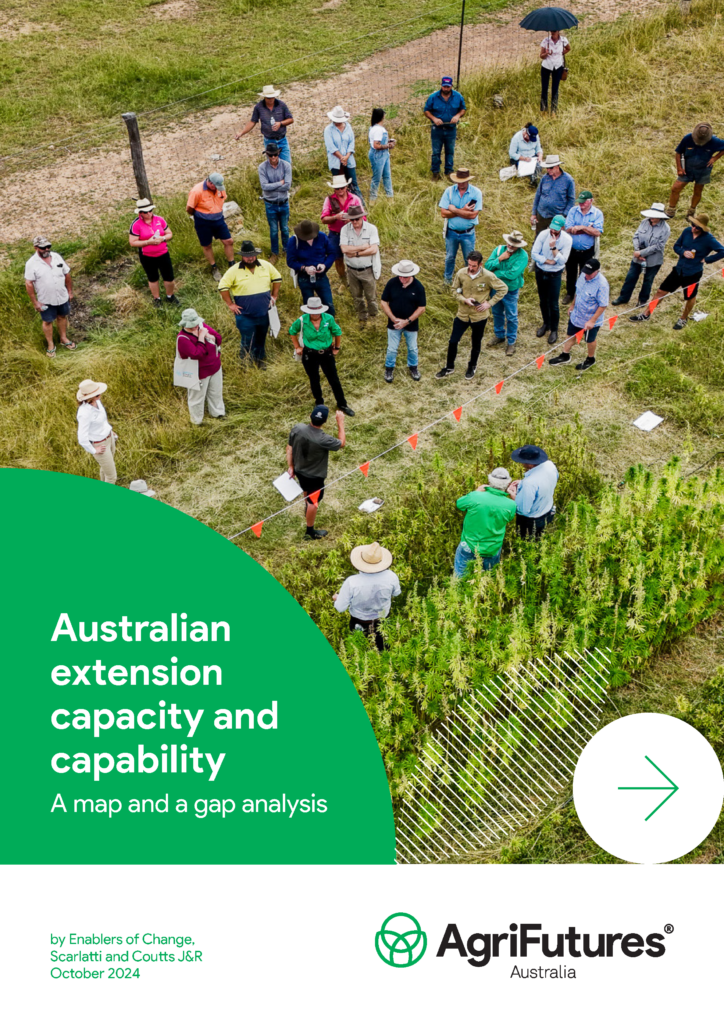The need for a robust and effective national extension system to support Australian agricultural industries is imperative to achieve impact at the production level. A well-resourced and adaptive system of practitioners, both public and private, enables adoption on farm, in production systems and across communities. This better ensures agricultural industries are equipped to optimise their production and prosperity.
Australian rural Research and Development Corporations (RDCs), along with other organisations and stakeholders, are increasingly aware that the collective national extension system has emerging and growing constraints to meet current and future needs. Within this context, this project mapped the current extension system and sought to understand future needs and focus priorities, with a view to redeveloping the system to meet these needs.
The project, undertaken in partnership with the broader RDC network, researched current extension practitioners and their capacity (time and resources) alongside their capability (skills, expertise and knowledge). A gap analysis was undertaken of additional and future needs. Priorities were identified for strategic planning, resource allocation and focus areas to ensure there is adequate extension capacity and capability available to support Australian agriculture into the future.
A key recommendation is that industries should ensure adequate resources are available for extension programs or projects (or the extension component within an RD&E project) via (1) extending funding timeframes; (2) embedding extension principles from the beginning of projects; (3) incorporating effective project evaluation; and (4) ensuring project funding allows for capability-building opportunities.
Attraction and retention can be improved by (1) providing a clear framework outlining the knowledge and skill requirements for practitioners; (2) funding practitioners to develop or attend short courses; and (3) providing targeted support to help new generations transition into an extension career.
Long-term improvements to the system can be made by (1) increasing investment in coordinated professional development at an industry level; and (2) developing industry-wide mentoring schemes and leadership training to establish structured career pathways and succession planning, ensuring intergenerational knowledge transfer.
AgriFutures Australia looks forward to integrating these recommendations in RDC partnerships.





